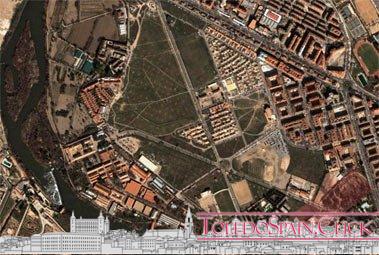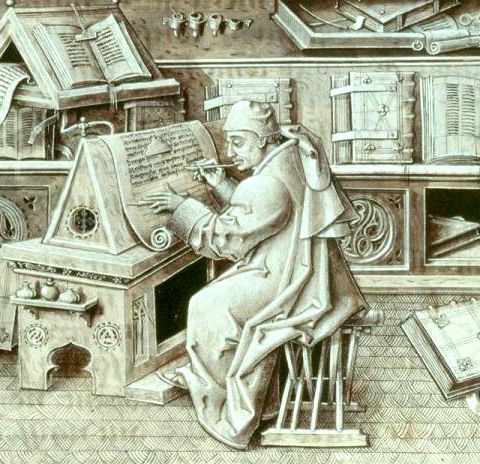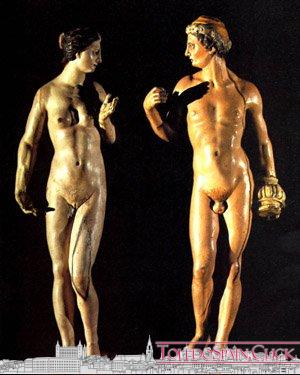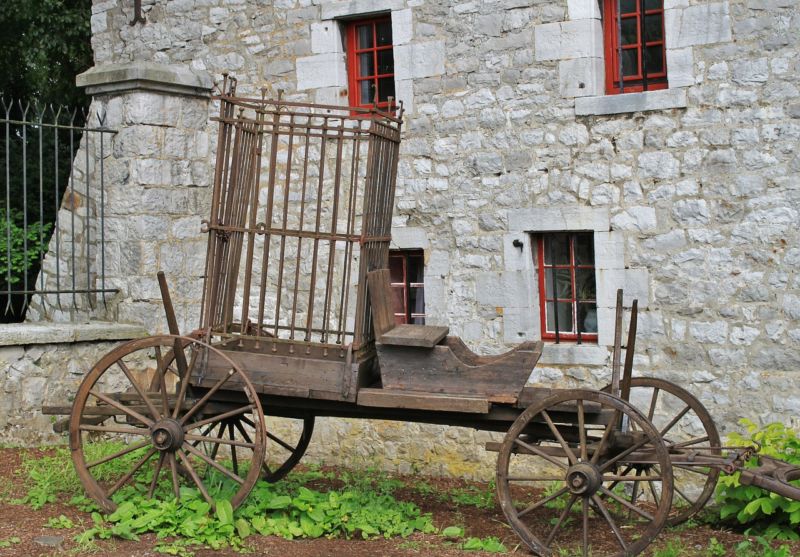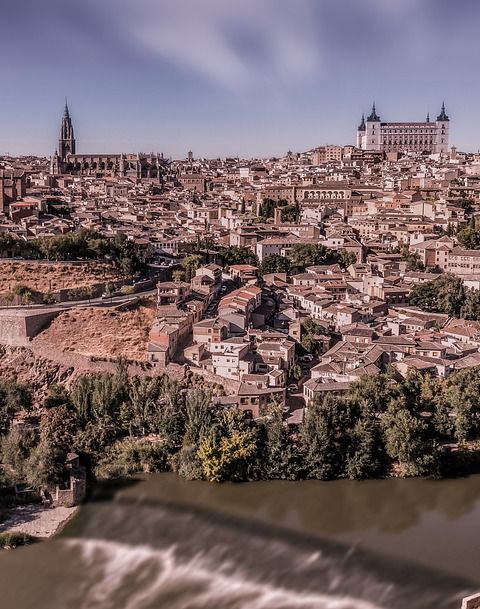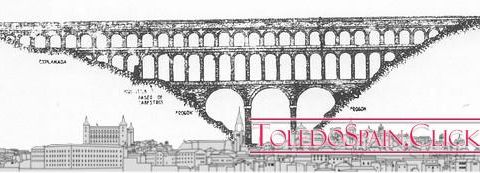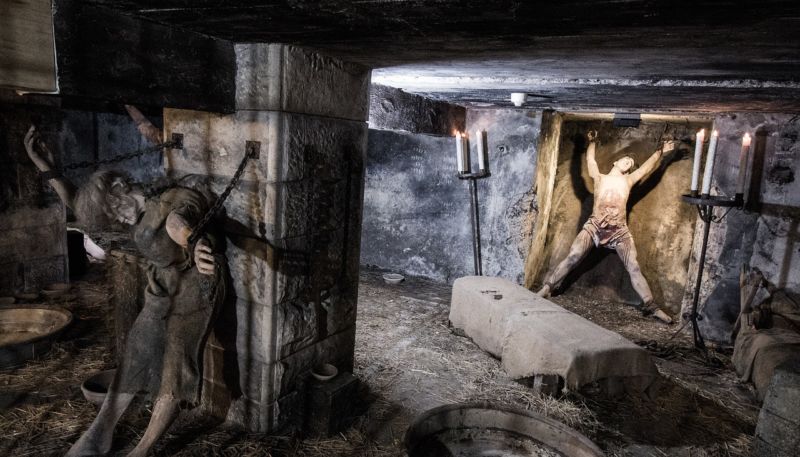I never tire of contemplating this city, which rises with gallantry over rough rocks encircled by the embrace of the Tagus. I like to sit among the rockrose on the shore, next to the bridge of San Martín, to feel the trembling of the breeze between the branches, to look around the walls of Toledo, behind which the beautiful Gothic forms of San Juan de los Reyes can be glimpsed, surrounded by gardens, crenellated towers and Mudejar bell towers.
By Carlos Montuenga, PhD in Science.
I never tire of contemplating this city, which rises with gallantry over rough rocks encircled by the embrace of the Tagus. I like to sit among the rockrose on the shore, next to the bridge of San Martín, to feel the trembling of the breeze between the branches, to look around the walls of Toledo, behind which the beautiful Gothic forms of San Juan de los Reyes can be glimpsed, surrounded by gardens, crenellated towers and Mudejar bell towers. The impetuous waters of the Tagus, on its journey to the west, surround the city on this side forming a deep moat, which was a decisive natural defence for its ancient inhabitants. Around the eyes; the deaf rumour of the river on the rocky bed and the distant sound of a bell, which chases the pure crystal of the air on this cold autumn afternoon, are mixed with the bustle of the birds in the grove of the banks. It seems as if all our worries and anxieties remain in suspense, while the fog of the plain ascends by the walls reaching the battlements; an uncertain atmosphere, in which the contours are diluted, is enveloping everything.
There are times when, when the evening dies, the last rays of the sun flicker over the highest towers and envelop the city’s earthly farmhouse in golden splendor, as if, by some ancient spell, the dust of the centuries were transmuted into gold. Then, the eyes of the imagination can show us things that almost always remain hidden: perhaps resplendent palaces of the Visigoths rising above the mist, or perhaps Arab fortresses surrounded by gardens and high minarets, such as those that centuries ago stood on these rocks, when Toledo was one of the most admired pearls of Muslim Spain. As we entrust ourselves to fantasy, the barriers of time fade away, as do the arches of the bridge of San Martín, barely visible between the veils of fog. One only has to dare to take the first step, and perhaps…
I have crossed the bridge, and when I reach the other bank and start to climb the slopes populated with undergrowth that lead to the walls, the blurred silhouettes of a crowd that rushes back to the city at the end of the day, carrying animals, small wagons pulled by donkeys and implements of work, begin to insinuate themselves. I distinguish women, children, men of all ages, covered in coarse peasant tunics and showing the skin tanned by the rigors of working outdoors in nearby vineyards. When they see me, some women hide their faces behind their veils and look at me with curiosity. It is the last quarter of the 11th century; al-Mamun reigns in Toledo, a Muslim sovereign who has gathered in his court a true army of men of science. I cross the wall and pass under an arch with large stone ashlars darkened by the smoke of the bonfires, over which brightly coloured banners flutter. I can barely move among the crowd, my feet sink into the muddy floor, where the straw mixes with the excrement of the animals, and I almost face several armed men who do not notice me, attentive only to the orders of an officer responsible for controlling access to the city; he is a tall individual, haughty gesture, covered by a level of leather reinforced with small metal discs, who carries a curved sword with an ivory handle on his belt.
The street meanders between brick buildings, vaulted towers, white walls with windows covered by lattices, from which the smell of fried food comes out. Later on, it leads to a square with numerous stalls, some of which are already closed at this time of the afternoon, where merchants strive to collect all kinds of goods; jars of wine, jars of oil, salted meats, jars with medicinal herbs next to baskets of fruit are piled up there. It passes by the workshops of tanners, tailors, shoemakers and blacksmiths. I continue climbing through a labyrinth of alleys towards the highest part of the city. As I pass a hallway, I see a small courtyard covered with vines, and in its centre, a well of carved brocal on which a girl with very long black mane rests.
A little higher up, several men in white turbans chat outside the door of a house. From a nearby alley, a group of children with large clusters of grapes rush out, chased by an angry old woman around the corner threatening them with a stick.
It’s been dark for a while and there’s not a trace of the fog. I repair with surprise in the warmth of the air, impregnated with the fragrances of a garden, at the very edge of the walls, where one hears the murmur of a fountain about the distant rumour of the Tagus at the bottom of the ravine. In the highest part of the city, the fortress of King al-Mamun, illuminated by the oscillating light of the torches, and close to it, the so-called House of Wisdom, a centre that houses a multitude of scholars at the service of the monarch, is cut out against the blackness of the night. In one of the palace’s towers is the famous observatory, from which astronomers scrutinize the starry sky on serene nights. Perhaps, at this moment, there is al-Zarqali, an eminent sage under whose direction tables were completed years ago, showing the positions and movements of the stars; they say that his vision of the planetary system audaciously surpasses all that has been conceived so far, and he was the first astronomer in history able to imagine the turning of the minor planets around the sun.
Several centuries ago, Arab astronomers had already initiated, from the Babylonian treatises, very complex calculations of celestial movements, allowing the development of a mathematical astronomy that culminated in the first and most important critique of Ptolemy’s geocentric system.
Centuries later, this contribution of Islamic science will play a decisive role in the Copernican revolution. But the court of al-Mamun not only owes its fame to astronomers; in Toledo there also live other sages devoted to alchemical studies or to the preparation of effective remedies to alleviate multiple ailments. Such is the case of Ben Uafid, a distinguished naturalist who directed the planting of a botanical garden next to the Tagus and has written a treatise on plants and medicines known throughout al-Andalus.
I look up at the night sky, shining on the rooftops of Toledo with the distant glow of the stars. As it rises above the Royal Palace, the lewd face of the moon submerges streets and squares in a cold light of melted silver. I wonder if the power of dreams would be enough to travel in its rays beyond the confines of the firmament, towards the mysterious immensity in which Aldebaran, Rigel, Alhabor, Alhurab shine…
I can feel, at this moment, the fascination that the night exerts on the native peoples of the desert. Nomads see the starry vault rise before them when the scorching sun hides behind the horizon every evening, and in the midst of the silence that envelops the dunes, the spirit expands effortlessly in the contemplation of infinity.
The stars are not only frequently mentioned in the Koran, but they allow believers to turn to Mecca in their daily prayers.
For the mentality of the Arab world, the ultimate objective of science cannot be other than the salvation of man, of his soul but also of his body; perhaps that is why great philosophers such as the Persian Avicenna, have been profoundly aware of theological questions, as well as excellent doctors.
In Toledo, as in other centres of knowledge of al Andalus, science and philosophy have reached such strength in these last years of the eleventh century that Muslim Spain becomes a true lighthouse for the West.
After a long period of intellectual prostration, Christian Europe begins to recover its pulse when it comes into contact with the cultural and scientific reality of Islam. The vast knowledge in theology, philosophy, medicine, astronomy or engineering that the Andalusian Muslims treasured, spread among the Latin scholars, eager to discover new fields of knowledge. The manuscripts of the great classical thinkers, such as Aristotle and Ptolemy, which the Arabs had translated from Greek and incorporated into their cultural heritage in the past, are now poured out from Arabic into Latin; this encourages the rediscovery of Greek authors in the Christian world, initiating a cultural and scientific recovery that will culminate in the Renaissance.
The air has been filled with the sounds of flutes and lutes which, from somewhere nearby, ripple languidly in the stillness of the night. I walk, attracted by the music, until arriving at a square where a villa of stately air appears surrounded by gardens. Behind high walls covered by flowering vines rises, between the dark profile of the cypresses, a slender tower crowned by white vaults, and next to it there is a doorway ajar to a courtyard surrounded by columns in which lamps with aromatic oils burn.
There I see many illustrious-looking characters strolling among the courtyard fountains surrounded by flowerpots, while the musicians pull out the sweetest notes from their instruments and the servants work hard carrying large trays full of delicacies from one side to the other. It is one more of the frequent evenings that enliven Toledo’s nightlife with the meeting of renowned poets and philosophers. The city recreates itself in its own splendour and perhaps its inhabitants have come to believe that no threat can put an end to this fortunate period.
Meanwhile, the political situation in the peninsula is increasingly favourable to the expansion of the northern kingdoms, and in 1085 these same streets will tremble with the victorious entry of Alfonso VI. But far from ending the supremacy of the city as a promoter of scientific and philosophical development, the arrival of the Christian monarch, who aspired to become a protector of the different cultures that coexisted in Toledo, would raise it even higher. Thus, during the following two centuries, it will end up becoming one of the most outstanding centres of thought in the western world.
Attracted by the School of Translators, founded by Bishop Raimundo in 1130, wise men from all corners of Europe will arrive here, such as Gerardo de Cremona, translator of an enormous number of treatises on mathematics, medicine and astronomy, including the Almagesto de Tolomeo, a capital work of Alexandrian astronomy long coveted by Christian scholars. Already in the 13th century, Alfonso X’s collaborators made, from the texts of al-Zarqali, the Alphonsine Tables, which were to be the most used until the Renaissance. In that same century, the translations of Averroes’ works carried out in Toledo would allow the thought of the eminent philosopher and doctor from Córdoba, who first proposed the supremacy of reason over faith, to be spread throughout European universities, coinciding with the awakening of scholasticism.
The song of a rooster in the distance greets the first lights of dawn.
Soon he will begin to clarify the valley of the Tagus and the powerful voice of the muecins will soon be heard everywhere, calling for prayer. Little by little, the city will recover its daily hustle and bustle, while the merchants get ready to exhibit their goods at the souk stalls. The streets will once again be filled with artisans, women with jugs of water, artisans who come to perform their duties, adventurers, healers and beggars. The city guard will again raise the heavy fences that close the passage at the gates of the walls and will begin the movement of people in all directions, peasants who come to guard the fields, patrols of soldiers, travelers en route to distant lands.
The contours of the bridge are insinuated again between the mist that rises from the river.
It’s time to cross it again…
An article by Carlos Montuenga, PhD in Science.
* Carlos Montuenga develops his professional activity in the scientific area, also collaborating with articles and stories in social communication publications such as ETC Magazine and Página Digital (Buenos Aires) in literary spaces such as Vorem, Margen Cero, Ariadna (Association of electronic magazines of Spain), Amalgama Magazine, Revista Voces, La sombra del Membrillo, El Rincón Literario, and in web portals dedicated to the diffusion of humanities and philosophy, such as Liceus and La Caverna de Platón. Contact: cmrbarreira@hotmail.com

